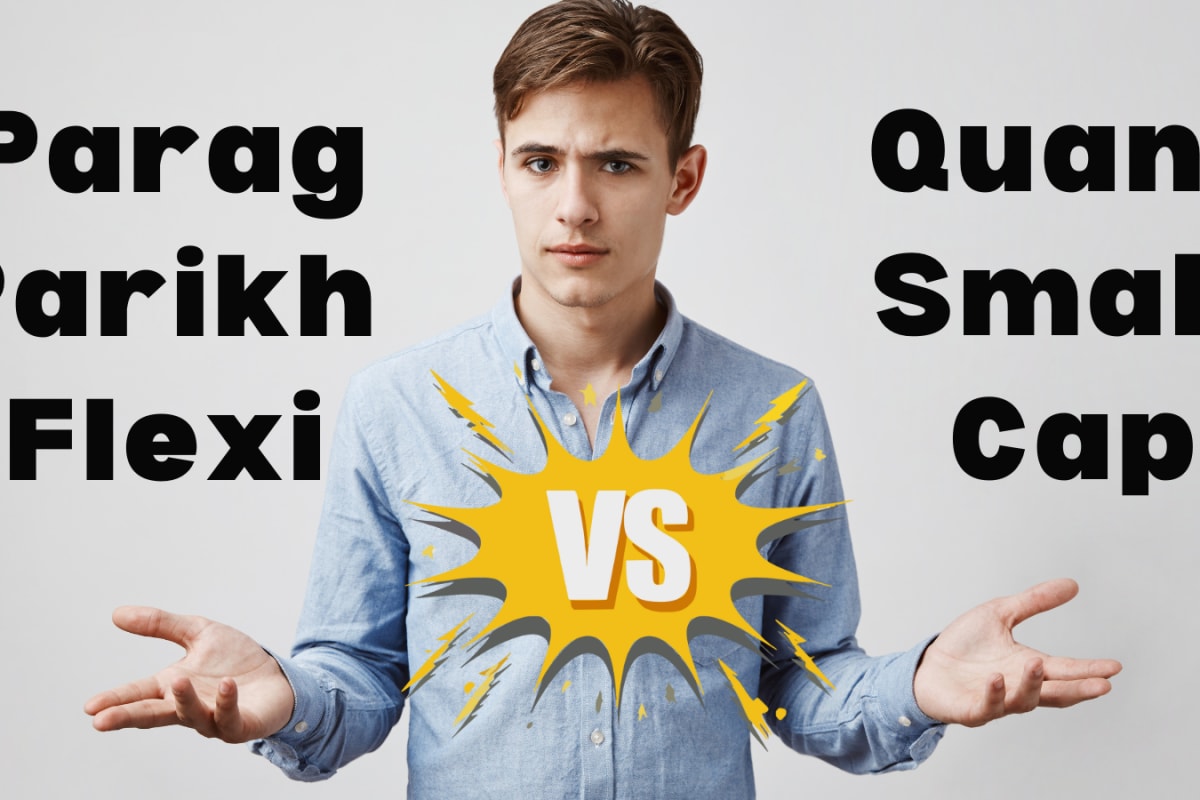

Deciding where to invest your money can be daunting, especially with the numerous mutual fund options available. Two popular choices for Indian investors are the Parag Parikh Flexi Cap Fund and the Quant Small Cap Fund. Both offer the potential for high returns, but they come with different risk profiles and investment strategies. Understanding these differences is crucial to selecting the fund that best aligns with your financial goals and risk tolerance.
Parag Parikh Flexi Cap Fund
The Parag Parikh Flexi Cap Fund is managed by PPFAS Mutual Fund. It's a flexi-cap fund, meaning it can invest in companies of all sizes – large, mid, and small-cap – without restrictions. This flexibility allows the fund manager to allocate assets across market capitalizations based on their assessment of where the best growth opportunities lie. As of March 31, 2025, the fund had ₹1,03,868 Crores in assets under management (AUM), making it a medium-sized fund in its category. The Net Asset Value (NAV) as of June 30, 2025, was ₹92.90. The expense ratio is 0.63%, which is competitive with other flexi-cap funds.
The fund aims to achieve long-term capital appreciation by investing primarily in equity and equity-related instruments. It also invests in foreign equities, providing diversification beyond the Indian market. The fund's domestic equity portion is managed by Rajeev Thakkar and Rukun Tarachandani, while Raunak Onkar manages the foreign investment component.
Risk and Return
The Parag Parikh Flexi Cap Fund is categorized as a very high-risk investment. However, it has a good track record of protecting against volatility. The fund has delivered competitive returns. Recent returns are 13.38% in 1 year, 25.65% in 3 years, and 27.31% in 5 years. Since its inception on May 13, 2013, the fund has generated an annual return of 20.23%. For every unit of risk, this fund produces 20% more returns.
Portfolio Allocation
As of May 31, 2025, the fund's asset allocation was heavily weighted towards equity (78.18%), with smaller allocations to cash and equivalents (10.14%), certificates of deposit (9.87%), treasury bills (0.71%), and commercial paper (0.45%). The fund has major holdings in HDFC Bank, Bajaj Holdings & Investment Ltd, Coal India Ltd, Power Grid Corporation Of India Ltd and ICICI Bank. The fund has investments across Financial, Services, Automobile and Technology sectors.
Quant Small Cap Fund
The Quant Small Cap Fund is managed by Quant Mutual Fund. As the name suggests, this fund primarily invests in small-cap companies, defined as those ranking 251st and beyond in terms of market capitalization. As of March 31, 2025, the fund had ₹28,205 Crores of AUM and the NAV as of June 30, 2025, was ₹283.82. The expense ratio is 0.66%.
The fund aims to generate capital appreciation by investing in a diversified portfolio of small-cap companies. Quant Mutual Funds uses a quantitative investing strategy based on their VLRT framework, which considers Valuation, Liquidity, Risk Appetite, and Time.
Risk and Return
Small-cap funds are generally considered riskier than flexi-cap funds because small-cap companies are more vulnerable to market fluctuations. Quant Small Cap Fund is categorized as a very high-risk investment. While it has delivered high returns, it can also be more volatile. Recent returns are -1.2% in 1 year, 33.0% in 3 years, and 46.3% in 5 years. Since its inception on January 1, 2013, the fund has delivered a CAGR of 18.5%. For every unit of risk, this fund produces 20% more returns.
Portfolio Allocation
As of May 31, 2025, the fund's asset allocation included Equity (92.78%), Debt (1.44%), and Cash & Cash Eq. (5.79%). The fund's top 5 holdings are in Reliance Industries Ltd., JIO Financial Services Ltd., Aegis Logistics Ltd., Bikaji Foods International Ltd., and RBL Bank Ltd. The fund has the majority of its money invested in Services, Healthcare, Energy, Financial, and Construction sectors.
Suitability
Recent Market Trends
It's important to note that small-cap mutual funds have faced a downturn in 2025, with negative returns averaging 11.72%. However, experts suggest that long-term investors may still benefit from corrections as potential buying opportunities, given the superior earnings growth potential of small caps.
Conclusion
Both the Parag Parikh Flexi Cap Fund and the Quant Small Cap Fund can be valuable additions to an investment portfolio. The choice depends on individual risk appetite, investment goals, and time horizon. If you prefer a more diversified approach with exposure to both domestic and international markets, the Parag Parikh Flexi Cap Fund might be a better fit. If you are comfortable with higher risk and seek aggressive growth potential, the Quant Small Cap Fund could be considered. Remember to consult with a financial advisor before making any investment decisions.